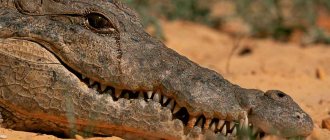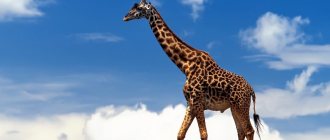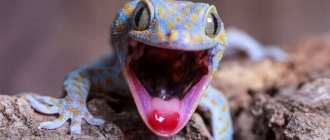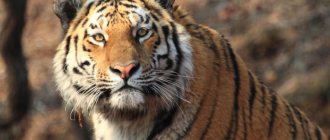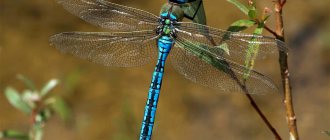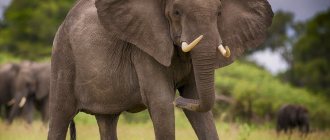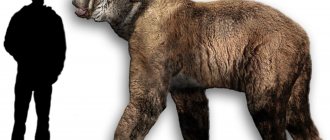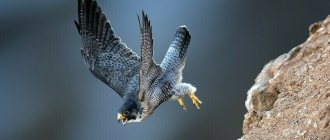What animal is the strongest on the planet? Many may think that this is an elephant or a blue whale. They have the largest size and weight. But does the strength of an animal depend on its size and weight? How to determine who is the strongest in the animal world? If we take into account the ratio of strength and weight, then many animals with less mass and size will be stronger than even the largest.
Elephant
Photo: Nam Anh
African elephants are the largest and strongest animals in the world. They are capable of carrying loads of up to 9 tons, although they themselves weigh only 6.3 tons. Their Indian relatives are also capable of lifting multi-ton weights. In addition, elephants have high intelligence: they experience emotions, recognize themselves in the mirror and use tools. Elephants have their own burial ritual. Elephants pick up and carry their newborn cubs with their trunks, which weigh at least 100 kg.
Great white shark
The great white shark (lat. Carcharodon carcharias) is also known as... the man-eating shark. Great white sharks are responsible for the largest number of recorded shark attacks on humans. They attacked the boats, sank them, and then grabbed the people who fell overboard. Fun fact: you can go cage diving in South Africa and see great white sharks up close.
Muskox
Photo: NPS Photo by Neal Herbert)
The musk ox or musk ox has thick, long, warm hair. This animal moves easily and deftly even on steep slopes. The height at the withers is approximately 138 cm, and the body length varies from 190–240 (in females) to 210–260 cm (in males). Musk oxen weigh approximately 300–350 kg, but those living in captivity can gain weight up to 650 kg. This animal can lift and drag up to 900 kg.
6.Anaconda
The heroes of the films, who found themselves in the Amazon jungle, repeatedly encountered this incredibly strong snake. Not only can she swallow and digest any animal weighing up to a quarter of a ton, but her muscles are located in such a way that breaking all the bones of a conventional gorilla will not require much effort from her. However, during the course of evolution, the anaconda prefers a different tactic - it strangles its victim, breaking its neck and all its ribs, and then absorbs the already lifeless body.
Gorilla
Photo: Amy Reed
Gorillas are the largest representatives of primates. They live in the forests of equatorial Africa. The height of these monkeys is comparable to that of humans - about 1.65–1.75 m. Females weigh about 75 kg, and males weigh more than 200 kg. Despite its rather modest size, the gorilla can lift and drag weights of up to 2 tons, for example, fallen trees. The Guinness Book of Records lists a gorilla who lifted a load weighing 815 kg. On average, a male gorilla is about 4–9 times stronger than a human.
Grizzly bear
A small grizzly bear cub weighs just over 500 grams at birth, but an adult male can weigh up to 900 kilograms. This 4-meter giant can reach speeds of up to 60 km per hour and, despite its enormous weight, is also an excellent swimmer. Therefore, it is better not to meet such a bear. True, in adulthood, grizzlies can no longer climb trees as quickly as in adolescence.
This inhabitant of Canadian forests is omnivorous, but especially loves to eat fish - grizzlies are excellent fishermen. During salmon spawning, they occupy a certain place near the river and try to catch fish in different ways - with their paws, lowering their heads into the water and opening their mouths. Particularly dexterous bears even manage to grab fish when they jump out of the river.
Eagle
Photo: Richard Lee
In flight, an eagle can grasp and hold in its paws a load that is 4 times heavier than its own body. The wingspan of this bird reaches 2.4 m, but the body length does not exceed 75–88 cm. Eagles live on almost all continents and nest on tall trees and rocks. Some species of eagles are listed in the Red Book because the numbers of these birds are declining.
Box jellyfish
As the water warms up, box jellyfish (lat. Cubozoa) swim closer to the shore. Therefore, the warmer the ocean, the higher the likelihood of encountering a jellyfish. Its bite can cause headache, vomiting, muscle spasms, allergic reaction, chills, fever and difficulty breathing. Box jellyfish are among the most dangerous because they have extremely powerful venom. Their bites have killed people.
South American harpy
Photo: gringosabroad.com
Another powerful bird is the South American harpy, which, like eagles, also belongs to the Accipitridae family. Females are slightly larger than males. On average, these birds weigh about 4–9 kg, their body length is 90–110 cm, and their wingspan is about 2 m. The harpy lives in the tropical forests of South and Central America. This bird of prey is known to have killed and carried away a 7kg howler monkey.
The strongest cat
The tiger is the strongest and largest of the cat family. They live in swampy areas, tropical forests and grassy lands in Southeast Asia, as well as in the Russian Far East. The Siberian tiger is the largest. An adult reaches a length of 190 - 230 centimeters. The weight of the animal can reach 300 kilograms. Tigers have powerful jaws and 30 teeth. The upper fangs of tigers reach a length of up to 10 centimeters, designed to tear flesh. Tigers are formidable hunters and can carry prey twice their own weight. Considering size and strength, they can even defeat lions.
Saltwater crocodile
Photo: uofa.ru
The strongest reptile is the combed crocodile, which lives in salt water, as well as in swamps and river deltas. This is the largest representative of the crocodile family. It is considered the largest land predator: its weight reaches 2 tons, and its body length is 7 meters. Males are much larger than females. Saltwater crocodiles live in India, Indonesia, Vietnam, New Guinea and Australia. The jaw compression force of this reptile reaches 2809–3512 kg. This is the most powerful and dangerous bite an animal can inflict.
Tiger
At the equator of the ranking of the most powerful animals in the world is one of the most powerful representatives of the cat family. Tigers fearlessly attack opponents whose mass is twice their own, which is more than a ton, and it is worth noting the ability to drag the corpse of prey into their territory or even lift it up a tree.
Predatory cats gain an advantage in a fight not only due to their impressive physical characteristics, but also due to their reaction, which allows them to quickly put their entire body weight into one blow, most likely fatal to the victim.
Copepod
Photo: hakaimagazine.com
One of the strongest representatives of the animal world turned out to be a small crustacean, whose body length does not exceed 1–3 mm. It is a copepod or copepod. They have extremely strong muscles, thanks to which copepods can swim and jump quickly. In 1 second, copepods cover a distance 500 times the length of their body. Scientists believe that copepods are about 10 times stronger than all other animals on the planet. The subclass of copepods includes both free individuals and parasites. Free copepods live in water, feeding on algae, detritus and bacteria. Parasitic copepods live on the bodies of many crustaceans, worms, mollusks, fish, amphibians and mammals, as well as on coral polyps. Copepods feed on jellyfish, baleen whales, ctenophores and most fish, including aquarium fish. Many copepods glow in the dark.
Are humans apex predators?
Recent research has concluded that our Paleolithic ancestors were apex predators until the megafauna they hunted began to decline and humans began domesticating animals and farming. But some scientists describe modern humans as apex predators because of the rate at which we kill land predators (up to nine times faster than natural predators). Humans' use of technology, our habit of poaching for reasons other than food, and our tendency to consume adult animals rather than young ones make us a destructive force in the animal kingdom. (, )
Dung-beetle
Photo: scitechdaily.com
Surprisingly, the small dung beetle is not only the strongest insect, but also the strongest animal in the world relative to its weight. He is capable of lifting objects 1,141 times heavier than his own body. For comparison: such a strongman can be compared to a person weighing 80 kg, but capable of lifting weights weighing 90 tons.
First place
The first place on Earth in size is occupied by the sperm whale. The suborder is toothed whales and the only species of the genus sperm whales. Adult males measure about 20 m and weigh 50 tons. There are also individuals weighing up to 100 tons.
The sperm whale feeds on squid and octopus. Whales obtain their food at great depths. These animals prefer to live in large groups, reaching 100 and even 1000 animals in size. These animals live throughout the World Ocean from Arctic waters to the equator.
Sperm whale
Do you know that a unicorn is not such a mythical creature. Want to know where unicorns live? Then this is the place for you!
If you find an error, please select a piece of text and press Ctrl+Enter.
Rhinoceros beetle
Photo: owlcation.com
An equally powerful insect is the rhinoceros beetle, which can carry a load 850 times heavier than itself. If a person had such heroic strength, he could lift weights weighing 65 tons. This beautiful beetle has attracted people's attention since ancient times. Archaeologists have discovered terracotta rhinoceros beetle figurines dating back to approximately 2000–1600 BC. and dating back to the period of the Cretan-Mycenaean civilization. He is depicted in paintings and postage stamps. Now the rhinoceros beetle is on the verge of extinction, therefore it is listed in the Red Book in many countries of the world.
The most dangerous predators in the world: interesting facts
- The male crocodile has a real “harem” - about ten females.
- People arrange fasting days for themselves, and crocodiles have fasting years. A predator may not eat for a whole year.
- Crocodiles swallow stones that remain in the stomach, helping to grind food and normalizing the animal's center of gravity.
- Bears have a two-layer coat: the top one, the shorter one, protects from the cold, and the longer one protects from water.
- When a bear sees a trap, it often rolls a stone towards it and then eats the bait without risk.
- During hibernation, the bear's pulse slows down five times - from forty to eight beats per minute.
Leafcutter ant
Photo: Don Parsons
Ants are famous hard workers. In its jaws, the leafcutter ant can hold and drag objects weighing 500 mg - 50 times more than the ant's body weighs. Other ants are not far behind the leaf-cutter tribe, capable of carrying objects 20 times heavier than their own body.
These are the most famous strongmen in the animal world. Almost all large animals have great strength: leopards, jaguars, hippos, hyenas, polar bears.
a lion
Often the most dangerous predators in the world receive very sonorous titles. For example, the lion is called nothing less than the king of beasts. And he lives up to his title. His strength allows him to hunt large animals (wildebeest or buffalo). These predators live in prides, and all family members participate in the hunt. Adult animals play hunting with young ones. The acquired skills will certainly be useful to young individuals in their future adult life.
It is necessary to take into account the impressive size of these animals, their strength and power. All these qualities allow lions to take their rightful place on the list of “The Most Dangerous Predators in the World.”
Brown recluse spider
This spider is commonly found in the central Midwestern states of the United States, especially Oklahoma and Arkansas. Symptoms caused by a recluse spider (Loxosceles reclusa) bite vary depending on the age of the victim. Bites are usually more dangerous for children, young adults and the elderly. The victim may experience nausea, fever and trembling, and in some cases surgery may be required to remove the necrotic tissue.
Puffer fish
The pufferfish, also known as the pufferfish (Tetraodontidae), is an extremely dangerous sea creature. Most fugu contain tetrodotoxin, a substance that is deadly to humans. One fugu fish contains enough toxin to kill 30 adults. And when you consider that it is an exquisite delicacy in Japan, it becomes obvious that some people just like to play with death.
